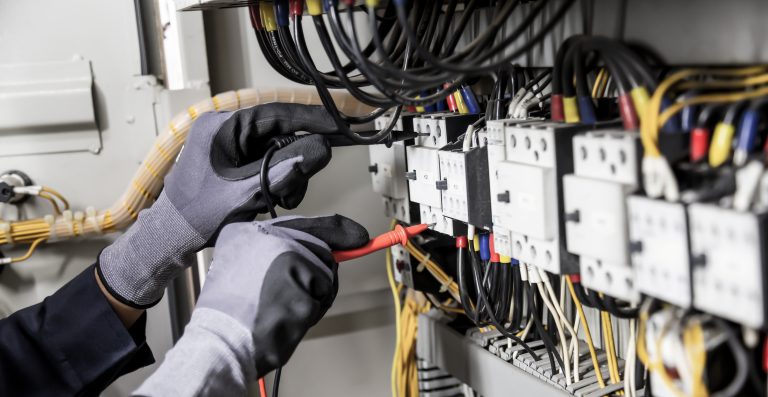In the iconic film The Matrix, Morpheus presents Neo with a choice between a red pill and a blue pill symbolising the decision to embrace the often harsh truth of reality or to remain in comfortable ignorance. Similarly, electricians today face a crucial decision as technology, especially artificial intelligence (AI), rapidly advances. Will you choose to embrace the “red pill” of technological innovation, reshaping your work and business? Or will you stick to traditional methods, potentially missing out on the efficiencies and growth that digital tools can offer?
The Digital Transformation in Electrical Work
Traditionally, electricians have relied on hands-on skills and a deep understanding of electrical systems. However, the industry is undergoing a digital transformation that is reshaping how electricians operate. This shift from manual processes to digital solutions is revolutionising various aspects of the trade, from paperwork management to customer interactions.
Government initiatives, such as Making Tax Digital (MTD), have accelerated this transition. Although initially challenging, these measures aim to simplify compliance and reduce paperwork, promoting efficiency. For electricians, this digital shift presents both challenges and opportunities. Adapting to new technologies may be demanding, but leveraging these tools can enhance productivity and business growth.
The Role of AI in Electrical Work
The year 2024 marks a significant moment in the mainstream adoption of artificial intelligence. AI is often portrayed in extreme terms—either as a threat or as a source of utopian change. In reality, AI is a valuable tool that can enhance rather than replace human capabilities. For electricians, AI offers several benefits, including predictive maintenance, automated job management, and energy management.
Predictive Maintenance
AI excels in analysing data to predict potential issues before they arise. Sensors and internet-connected devices are now affordable and widely available. For instance, predictive maintenance tools can alert electricians to potential system failures, allowing for proactive maintenance that reduces downtime and prevents costly repairs. Companies like Fiix offer software that connects to devices and provides early warnings about potential issues.
Automated Job Management
Automation is transforming job management for electricians. Tools that automate scheduling, quoting, invoicing, and communication are becoming increasingly popular. AI can optimise schedules based on job urgency, location, and available resources, allowing electricians to complete more jobs efficiently. Automation also reduces administrative burdens, freeing electricians to focus on technical work. Tools like Powered Now, SimPro, and Commusoft are examples of software that streamline job management, acting as an additional team member for solo practitioners.
Energy Management
AI’s impact on energy management is profound. At the recent Installer Show in Birmingham, it was evident how advanced energy management systems have become. AI tools can analyse a building’s energy usage patterns and suggest optimisations to reduce consumption and costs. For example, AI can adjust lighting and HVAC systems based on occupancy data or recommend energy-efficient components. For electricians, this means providing smart energy solutions that offer significant savings and environmental benefits.
Enhancing Productivity Through Automation
The trade industry faces significant productivity challenges, as highlighted in Mark Farmer’s 2016 report, Modernise or Die. The report emphasises the need for modernisation to address issues such as labour shortages and low productivity. AI and automation are key drivers of change, with a focus on working smarter, not harder.
Streamlining Workflows
Digital tools and AI can streamline workflows by automating repetitive tasks. For instance, job management software can automatically fill in forms with customer and job details, eliminating manual data entry. Automation of routine tasks allows electricians to focus on more complex aspects of their work.
Mobile Technology
Mobile technology is revolutionising fieldwork. Electricians can now access job details, update progress, and communicate with clients via smartphones or tablets. Mobile apps tailored for electricians can capture essential on-site data, such as photos or signatures, further streamlining processes. However, it’s essential to account for potential connectivity issues in certain areas.
Data-Driven Decision Making
AI and digital tools enable data-driven decision making. By analysing data from past jobs, electricians can identify trends, optimise pricing, and improve service delivery. Tracking job profitability helps focus on the most lucrative areas, driving business growth.
Balancing Technology with Craftsmanship
Despite the advantages of technology, the core of the electrical trade remains craftsmanship and expertise. AI and automation are tools to enhance, not replace, professional skills. The electrician of the future will integrate technological advancements while upholding the core principles of the trade.
Continuous learning is crucial to staying competitive. Training programmes, online courses, and industry certifications help electricians keep up with technological advancements and effectively use new tools. Personal connections with customers also remain vital, as AI can handle many aspects of interaction but cannot replace the human touch needed to build trust and understand customer needs.
Preparing for the Future
The future of electrical work is increasingly digital, with AI and automation playing central roles. Electricians who can integrate these technologies into their daily work while maintaining their craftsmanship and personal service will thrive. Tools like Powered Now and Fiix are part of a broader digital ecosystem that enhances productivity and customer satisfaction.
As the industry evolves, electricians must be adaptable, tech-savvy, and customer-focused. Embracing AI and digital tools can transform the way electricians work, leading to better results for customers and greater satisfaction in their careers.


